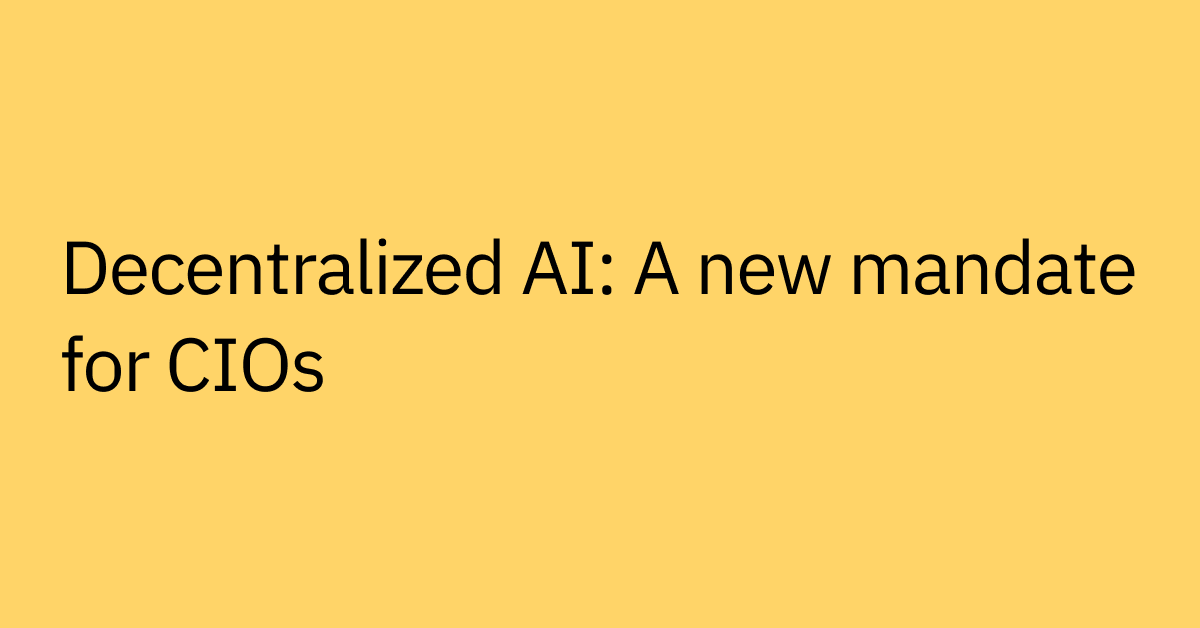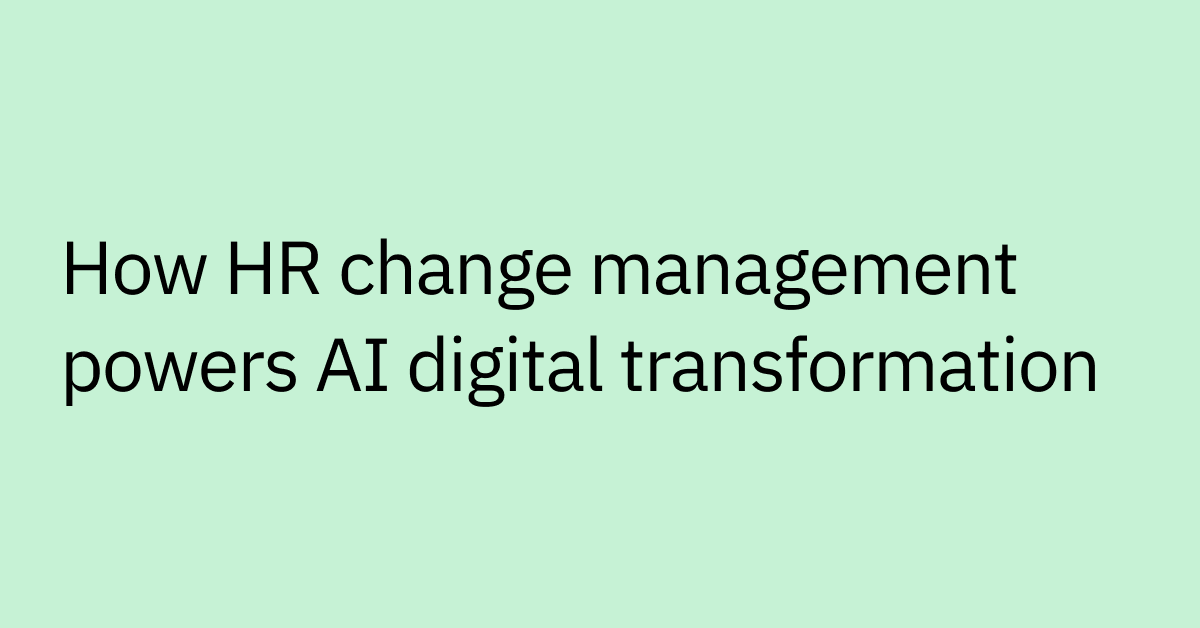Table of contents
Highlights
- HR operational efficiency combines streamlined processes, integrated systems, and AI-powered automation to deliver better employee experiences while reducing manual workload.
- Common roadblocks include fragmented systems, repetitive manual tasks, and limited bandwidth for strategic initiatives.
- The biggest efficiency gains come from automating routine support, providing instant access to HR knowledge, and orchestrating end-to-end processes across systems.
- AI agents are designed to handle complex, multi-step HR workflows, from onboarding new hires to processing policy questions, with minimal human intervention.
- HR efficiency can drive both cost savings and culture gains, directly impacting retention, productivity, and employee satisfaction scores.
Your HR department is constantly being asked to deliver better employee experiences while managing both rising costs and expanding workloads—all without adding headcount.
Speaking of rising costs, according to Gartner’s 2024 HR Budget and Efficiency Benchmarks research, companies spend nearly $3,000 per employee on average in HR operations annually—yet employee satisfaction with HR support is inconsistent.
The challenge? Traditional manual HR processes and one-off automations that used to work start breaking down at scale, creating bottlenecks that can frustrate both employees and HR teams.
The good news is that AI can play a key role in increasing HR operational efficiency. In fact, 93% of HR leaders agree that AI is a highly effective tool for reducing costs. This shift toward operational efficiency is changing the way enterprises deliver HR services, creating faster, smarter, employee-centric experiences that actually scale with their workforce.
With the right tools and approach, HR can become a strategic, value-adding department that drives positive business and people impact.
What is HR operational efficiency?
HR operational efficiency is the ability to deliver high-quality HR services—such as onboarding, benefits enrollment, and policy updates—quickly, precisely, and with fewer resources.
It goes beyond the idea of "doing more with less" by streamlining processes, integrating existing systems that employees are already familiar with, and using technology to adapt quickly to change while meeting the evolving needs of the workforce.
This might include:
- Improving accuracy and consistency in HR processes
- Accelerating workflows, such as hiring, payroll, and employee support
- Integrating multiple systems and stakeholders to ensure smoother operations
- Using technology (like AI-powered automation platforms) to manage complex, cross-functional HR processes like onboarding, benefits enrollment, or case management)
In the past, HR focused extensively on enabling compliance, paperwork, and problem-solving. Today's efficient HR organizations act more as strategic business partners, using data and automation to drive engagement, retention, workforce productivity, and morale. When HR operations run smoothly, it helps reveal measurable improvements across multiple areas:
- Lower employee turnover rates due to better support experiences
- Faster decision-making as HR teams access real-time workforce data
- Higher productivity as employees spend less time navigating HR processes
- Improved employee satisfaction scores as support becomes instant and personalized
Why HR operational efficiency matters more than ever
In addition to any internal issues, enterprise HR leaders also face external pressures that make efficiency all the more important.
For instance, talent shortages across industries mean you need to attract and retain employees more effectively than ever, while remote and hybrid work models require HR support that works across time zones and locations. Meanwhile, evolving diversity, equity, and inclusion (DEI) expectations demand constant HR awareness and oversight.
These pressures directly tie to HR and organizational transformation success metrics. Maintaining efficient HR functions can improve:
- Employee satisfaction scores through faster, more consistent support
- Reduced turnover by addressing pain points before they lead to departures
- Higher ROI on HR systems by maximizing the value of existing technology investments
- Lower case-support costs as routine requests get resolved automatically
The ripple effect is noticeable: Efficient HR leads to better employee experiences, which then drives higher engagement, which ultimately strengthens business results across the organization.
Common roadblocks to achieving HR operational efficiency
Even well-intentioned HR teams encounter obstacles that limit their ability to scale efficiently. Being aware of potential roadblocks can help you identify where AI-powered solutions might provide the most value in your situation.
Manual, repetitive processes drain time and limit scalability. When your team spends hours answering the same benefits questions or manually routing approval requests, it takes time away from high-value projects like talent development or employee engagement programs.
Siloed systems and fragmented data make it hard to get a complete view of your employees' needs. Your human resources information system (HRIS) might not talk to your learning management system, which could force your team to work across multiple platforms to complete simple tasks. Not a great (or efficient) employee experience.
There are sometimes human roadblocks, as well, such as resistance to change from stakeholders or employees who are used to "the way it's always been." This can happen when new technologies are introduced without proper change management or when the benefits aren't clearly communicated to end users.
HR professionals also have limited bandwidth to vet, select, and implement new technologies. Between managing daily operations and putting out fires, finding time to research and deploy new efficiency solutions becomes a challenge in itself.
The role of AI in driving HR operational efficiency
Ultimately, the goal of operational efficiency is to free HR teams from repetitive service tasks so they can become more proactive and strategic.
AI efficiency enables smart automations that can streamline your HR team’s workflows end-to-end across the employee lifecycle, from onboarding to performance management. AI also helps to agentically perform tasks and deliver insights into employee experience in real-time.
Modern, AI-powered enterprise tools,can also help get your teams to that point by combining:
- Conversational AI that can deliver natural, everyday language interactions, answering FAQs and providing basic assistance.
- Agentic AI automations can think, reason, and plan to take action across your systems, such as filing tickets, and managing issues independently. This can streamline employee support and reduce repetitive HR tasks.
Conversational and agentic AI automations can integrate your existing systems and work together to manage issues instantly, reduce overall case volume, and deliver a streamlined employee experience.
With the right setup and tools, employees can ask a conversational AI assistant, right inside Slack or Microsoft Teams, "How do I update my direct deposit information?" Agentic AI can understand the intent behind the question, guide the employee through the process step by step, and even update the information directly in your HRIS.
Done right, this can create a productive, efficient support experience at a massive scale that helps to improve metrics for HR operations and can boost employee satisfaction scores too.
As your workforce expands, HR requests typically rise at the same pace. But with AI taking on routine tasks, HR teams can break that pattern—scaling support without scaling headcount. The result: more resources for high-impact initiatives, from culture to leadership development to employee engagement.
Actionable strategies to improve HR operational efficiency
Efficiency improvement takes a strategic approach that balances quick wins with long-term transformation. Here are some strategies that can help you deliver measurable results while building a base for ongoing, scalable innovation.
Automate routine employee support tasks
Start by identifying the most common, straightforward requests your HR team handles repeatedly. These probably include HR policy questions, benefits information, and status updates on pending requests.
AI chatbots and AI assistants can be tuned to instantly answer these FAQs and route more complex inquiries to appropriate team members, freeing up your HR staff.
Begin with a pilot program to test AI effectiveness before a full-scale deployment. Choose a specific use case, like benefits enrollment questions, and measure both resolution speed and employee satisfaction. This allows you to measure and demonstrate value quickly while learning what exactly works best for your organization.
Companies like Databricks have used similar a approach to scale support dramatically. Their AI assistant handles thousands of routine requests monthly, allowing their HR team to focus on culture building and strategic workforce planning, instead of on repetitive support tasks.
Provide instant access to HR knowledge and resources
Employees need quick access to accurate information about policies, benefits, and workflows. Traditional approaches like intranets or static knowledge bases often bury information in hard-to-navigate applications and file systems, leading to repeated questions and frustrated employees.
A better approach may be to offer an AI assistant that is able to search across disconnected applications to surface accurate, contextual answers on demand.
Take it a step further by using analytics to identify knowledge gaps and continuously improve your HR communications. When you see certain questions asked frequently, it indicates an opportunity to clarify policies or improve documentation.
Consumers Energy implemented a similar approach and saw fast improvements in employee satisfaction with HR support, saving big with a single campaign. The company's conversational AI system reduces time spent searching for information, while providing employees with easy access to current and accurate policy details.
Automate and streamline processes
Focus automation efforts on high-volume, multi-step processes that currently require manual coordination. Onboarding, offboarding, benefits administration, and attendance management is a great place to start.
These automations tie directly to strategic goals around hiring efficiency, performance management, and enabling compliance. When onboarding tasks like paperwork, system setup, and training enrollment are automated, your team can have more bandwidth to focus on building relationships and provide strategic support.
Measure and monitor key HR efficiency metrics
Track metrics and KPIs that directly connect to business outcomes and employee satisfaction. Good indicators include:
- Time-to-resolution for employee requests
- HR case volume trends over time
- Employee engagement scores related to HR support
- Internal promotion rates and training participation
- System ROI through usage analytics and cost reduction
Some AI tools allow for real-time engagement tracking through analytics and feedback mechanisms. You can monitor who acts on communications and adjust HR strategies for better results based on actual employee behavior, instead working from assumptions.
Where HR leaders are able to make the biggest efficiency gains
HR leaders should focus their efficiency efforts on areas with the highest impact potential. These four domains can drive huge improvements, reducing costs while boosting employee satisfaction.
Recruiting and onboarding
Automated recruiting and onboarding covers some of the highest-stakes, highest-volume processes in HR. Automating candidate screening, interview scheduling, and offer letter generation can speed up hiring cycles, which may be an advantage when every day matters in competitive talent markets.
After hiring, how much time does your HR team may currently spend a considerable amount of time coordinating between IT, facilities, and managers—just to get one person started?
AI-powered onboarding can orchestrate these handoffs, making sure new employees have system access, equipment, and training materials ready on day one.
Streamlined onboarding with pre-configured workflows can handle paperwork, equipment and software provisioning requests, and first-day orientation automatically. This leads to a consistent, high-quality experience for new hires while reducing administrative tasks for your team.
Explore the Ultimate Guide to Enterprise HR Onboarding Automation and discover how automation can transform your onboarding process.
Employee case management
Providing employee support can take up a massive chunk of HR professionals' time and bandwidth, making it an ideal opportunity for efficiency gains. The challenge is that employees need quick answers to everything, from benefits questions to policy clarifications, but manual support is hard to scale.
A system that can automatically route complex cases to the right HR team member or file tickets on an employee’s behalf can reduce the back-and-forth delays, while still providing that employees get specialized expertise and accurate answers. Alternatively, an HR chatbot can answer common questions instantly, and avoid ticket creation altogetherwithout creating tickets at all.
This gives employees 24/7 access to information without increasing your HR team size. Instead of waiting for business hours or a free HR team member to get answers about PTO policies or health benefits, employees can get immediate, accurate responses through conversational AI interfaces like Slack or Microsoft Teams.
Download the HR Leader's Guide to Automating Employee Support and learn how to transform employee support with AI.
Performance and employee engagement
With all the manual coordination of review cycles, feedback collection, and development planning, performance management typically eats into HR professionals' time. This administrative overhead can limit how much time teams have to spend on the strategic coaching that actually improves performance.
Standardized employee performance review cycles with automated reminders and centralized feedback tools can help cut down the coordination burden. AI tools can surface personalized training recommendations based on employee goals and role requirements, making development more targeted and effective.
This frees up HR resources to focus on coaching managers, driving growth, and recruiting top talent instead of managing spreadsheets and chasing down missing or overdue reviews.
Employee communications
Keeping employees up to date on major deadlines, required trainings, and policy updates in a personalized, region-specific way takes a lot of coordination. While typical email blasts may escape notice and often get ignored, while personalized communications may feel too time-intensive to scale.
Targeted messaging via AI tools can helplets organizations send actionable, relevant information to specific employee groups. The right people get the right information at the right time, driving higher engagement and compliance rates.
WAnd with the right tools, administrators can craft, schedule, and send notifications, customizing the audience, timing, and format. Analytics can then track campaign effectiveness and employee engagement, providing the data teams need to continuously improve internal communication strategies.
Compliance management
Between labor laws, health and safety standards, and data privacy regulations, HR contends with a number of compliance requirements. Automating compliance tracking and training reminders can reduce risk, while maintaining audit readiness. AI makes it simple to have centralized documentation can help you stay prepared and reduce the stress of compliance reporting.
Turn efficiency into a strategic advantage with Moveworks
HR teams are coping with rising workloads, limited resources, and pressure to improve employee experience. They need to scale operations, but may encounter roadblocks with traditional HR systems. They need systems designed with the modern workforce in mind.
- Moveworks AI Assistant works to automate HR tasks like answering FAQs and processing requests, improving employee experience while freeing HR teams to focus on work that requires a human touch.
- It provides 24/7 conversational support that integrates with existing tools, enabling you to streamline workflows, improve HR support metrics, and reduce costs.
- Features advanced natural language understanding (NLU) to help deliver more consistent support across locations, languages, and time zones.
Enterprises like Johnson Controls scaled HR support across 100k+ employees and reduced operational HR work with Moveworks. Similarly, BambooHR used automation to save big with autonomous benefits processing—cutting down on back-and-forth and saving valuable time for everyone involved.
HR operational efficiency enables faster hiring, better employee experiences, and a stronger competitive advantage—all while empowering HR to focus on the "human" part of human resources.
Frequently Asked Questions
HR efficiency focuses on optimizing processes and reducing resource waste, while HR effectiveness measures how well HR initiatives achieve strategic goals like retention, engagement, and talent development.
Yes. Efficiency improvements can free HR resources to focus on strategic DEI programs while maintaining fair, consistent processes across the employee lifecycle.
Consider both upfront costs and long-term ROI. Tools that reduce manual workload, cut case resolution costs, and improve retention have the potential to pay for themselves.
Risks include poor adoption due to lack of training, data privacy, over-reliance on automation, or neglecting the human touch in sensitive or complex situations.
Timelines vary, but with the right automation tools and process changes, HR leaders may see continuous improvements in request resolution times and employee satisfaction within a few months.
Key HR metrics include time-to-resolution for HR requests, internal net promoter scores (NPS) for HR support, employee turnover rate, ROI on HR systems, and case support expenditure.



